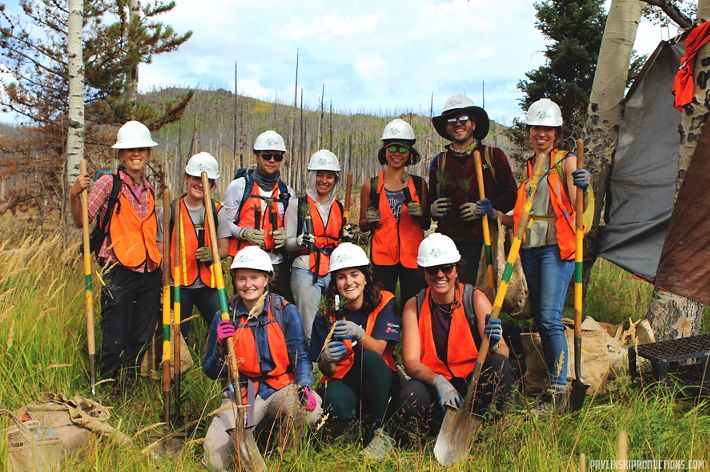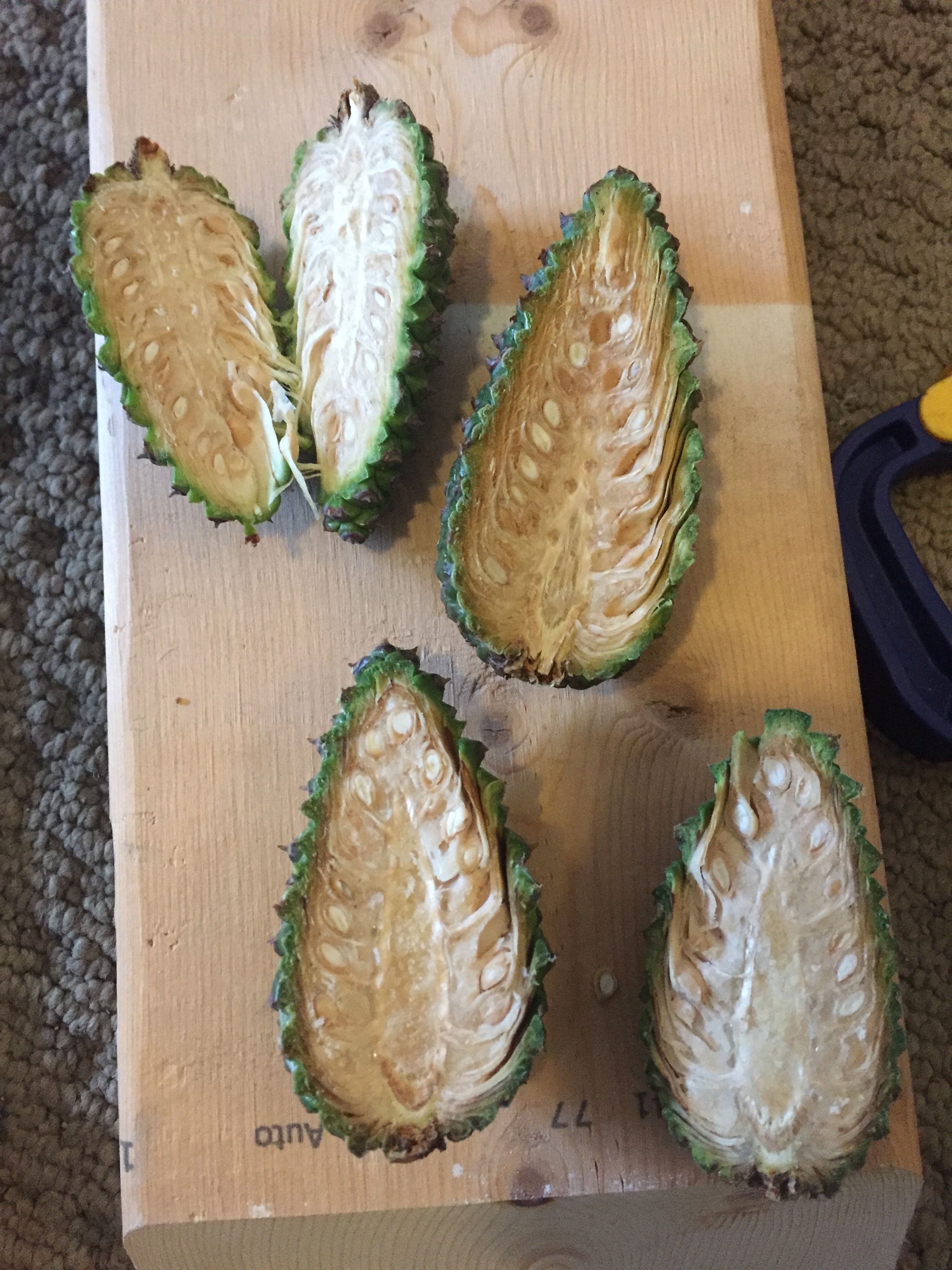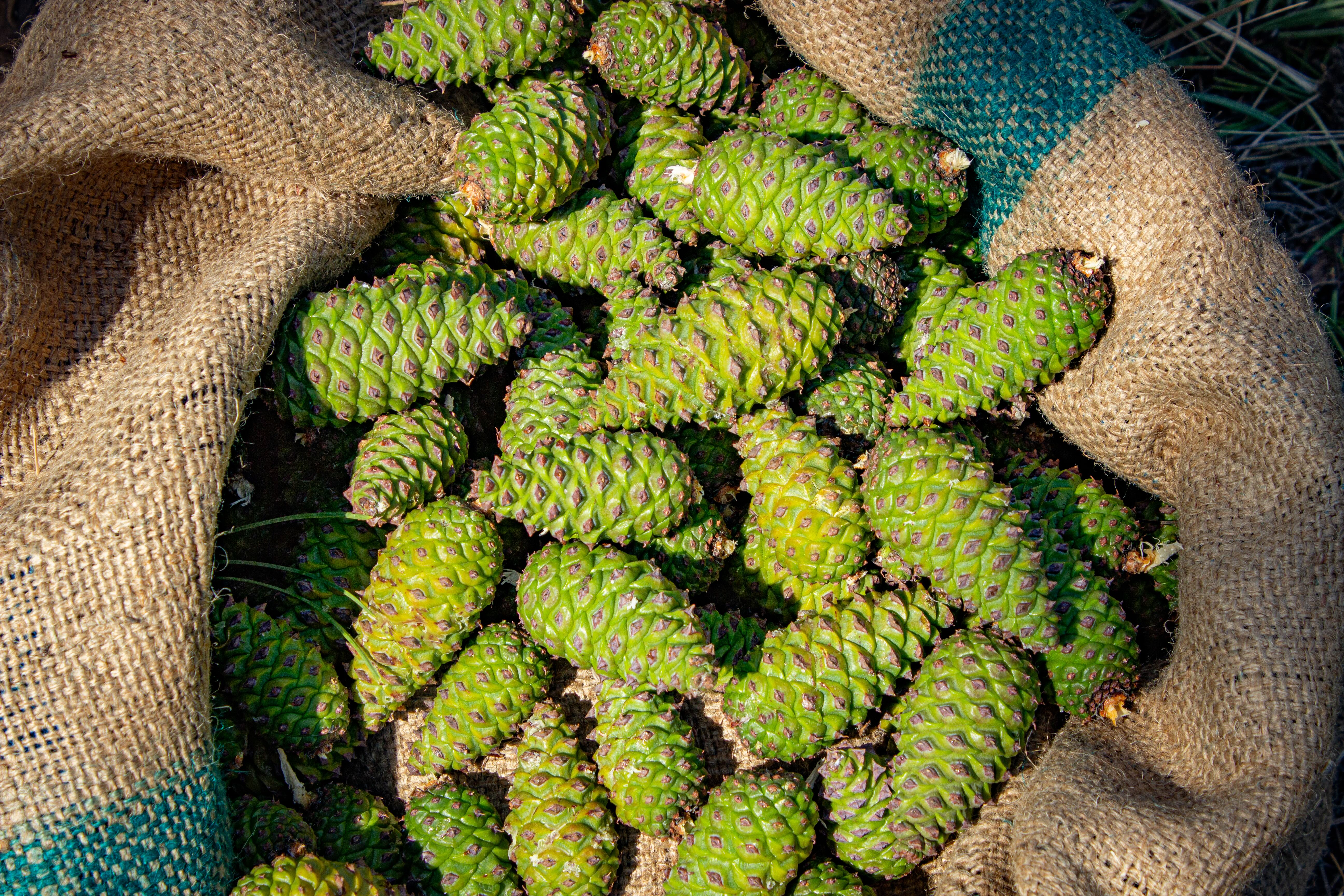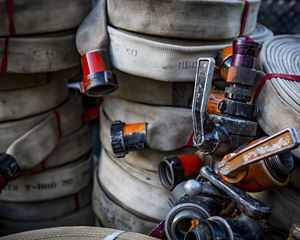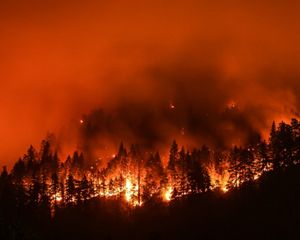Western Dry Forests and Fires Stories
Planting Trees Can Help Forests After a Fire
When megafires burn nature’s seed bank, people give a helping hand

Planting a tree begins with a seed. Planting a forest, it turns out, takes a whole lot more. Beyond water and soil, and time, there’s something else: It takes a lot of people to plant a forest, people who work behind the scenes to collect seeds, grow seedlings in nurseries and, after our worst wildfires, plant them wherever nature needs a helping hand.
Catherine Schloegel is one of these people. As the watershed forest manager for The Nature Conservancy in Colorado, she knows forests. She teaches others how to plant seedlings in the burnt remains of a forest so that they’re more likely to take root and survive, plus she monitors their progress in the rugged terrain of the southern Rocky Mountains. On top of that, Schloegel helps link up a supply chain of something you can’t go out and buy in a store: the thousands of ponderosa pine seeds, and the seedlings they’ll become, meant for replanting areas scarred by the most intense wildfires.
“(Ponderosa pine) is a widespread species here throughout the interior West, but it’s a climate sensitive species,” Schloegel said. “We see it’s less able to recover after fire because the seedlings struggle to survive in the hot and dry conditions found in burn scars.”
Demand is up for these native seeds in the southern Rocky Mountains because the number of larger and hotter wildfires has more than doubled since the 1970s.
The way fire shapes forests in many locales around the world is changing as temperatures on Earth continue to rise. In Colorado, temperatures are up an average of 2.3 degrees Fahrenheit since 1980—this means even less water to go around in the semi-arid West. It’s a region already prone to drought, and a deep taproot is one adaptation that allows the ponderosa pine to grow where other trees cannot. But in some cases, even if trees are planted, forests won’t return because the conditions brought on by climate change are now too warm and dry. This is why, after catastrophic fires, scientists rely on climate models to help them see into the future to select the right areas for planting trees.

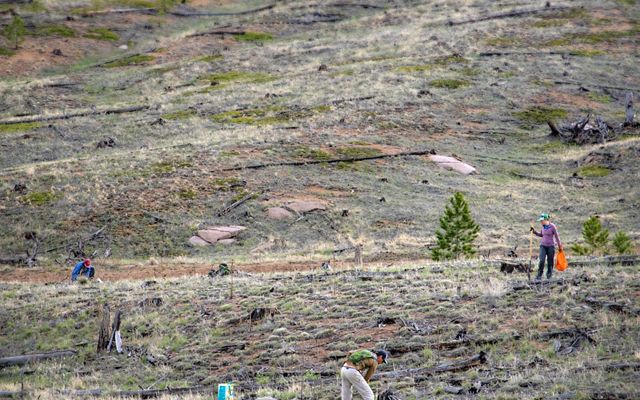
Suppressing Fires Has Led to Bigger, Hotter Megafires
For millennia, Indigenous Peoples have used fire to care for forests with sophisticated practices that help the forest but which have largely been interrupted. Over the last century, firefighters largely succeeded at putting out wildfires before they spread far and wide. Those heroic efforts may have calmed nerves in Western towns, but the practice of promptly putting fires out the next morning—sometimes called the “10 a.m. rule”—left forests out of balance: Odd as it may seem, suppressing wildfires has let too many trees—along with shrubs and dead vegetation, like dried pine needles—crowd into small spaces. If you look at an acre of a ponderosa pine forest in the West today, it could have four times as many trees as it did before European settlement. These dense forests provide fuel for fires—meaning they burn much hotter.
“In Colorado, the 2002 Hayman Fire is when we realized that fires were burning differently,” Schloegel says.
The Hayman Fire burned 138,000 acres—making it the state’s largest fire at the time—but it wasn’t only the sprawling size of it that gave fire experts a scare. Fire often leaves behind a patchwork of green forest remnants and burned trees—and from this mosaic a new generation of trees can grow because, in time, living trees yield a fresh crop of pine cones—each releases an average of 60 winged seeds. But in places the Hayman Fire burned especially hot, and that left 60,000 acres of forest charred and lifeless.
Megafires like these burn too hot, destroying the very pine cones and trees so essential for the next generation of ponderosa pine trees. Although there will be trees left standing in less severely burned areas, their small winged seeds are not likely to travel more than 150 yards.
This is where people can give the forest a helping hand by planting trees.
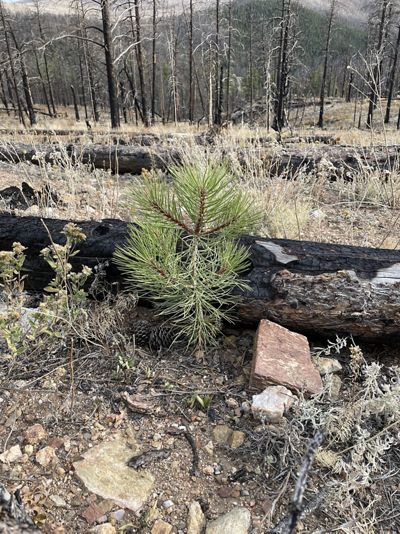
“You’re miles away from an actual live tree that could provide seed,” says David Hernandez, land stewardship manager for TNC in New Mexico, who led volunteer tree planting efforts in a limited area after the 340,000-acre Calf Canyon/Hermit’s Peak Fire in 2022.
For forested areas to bounce back, some foresters focus their efforts on a new planting layout better adapted to future conditions—planting islands of seedlings and leaving large gaps in between. Basically, recreating naturally open savannas of ponderosa pines.
“And that way, when those (trees) get old enough to produce seed, the seeds will disperse off that island to the surrounding area and grow new trees,” Hernandez says. The naturally open space between tree islands also prepares the way for prescribed fires in the future.
But planting trees is painstaking work, and it would take millions of seedlings to plant the highest priority areas. After the 200,000-acre Cameron Peak Fire in 2020, TNC pitched in with 100,000 seedlings for reforestation efforts—with more to come. Yet for efforts like this to continue as drier conditions heighten fire risk, research shows that nurseries in the United States will need to step up production—more than doubling current levels—to meet demand. Until more investment flows to hiring and training more workers and boosting the capacity of tree nurseries and seed collection efforts, tree planting in many fire-scarred areas will need to wait—if it happens at all.
Indeed, where crews haven’t planted trees, the shadow of the catastrophic Hayman Fire remains two decades later.
“In places without planting,” Schloegel says, “it’s like the moon out there.”
Stay Connected
Sign up for monthly emails to discover news, updates and opportunities.

